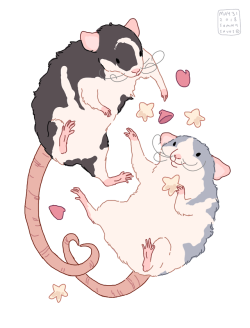stanprokopenko: Aaron Westerberg shows how he mixes flesh tones and uses the tiling method to paint the face. Flesh tones are usually misunderstood as a specific range of peaches and browns. But it’s unique to every painting depending on the environment

stanprokopenko: Aaron Westerberg shows how he mixes flesh tones and uses the tiling method to paint the face. Flesh tones are usually misunderstood as a specific range of peaches and browns. But it’s unique to every painting depending on the environment

stanprokopenko: Aaron Westerberg shows how he mixes flesh tones and uses the tiling method to paint the face. Flesh tones are usually misunderstood as a specific range of peaches and browns. But it’s unique to every painting depending on the environment

stanprokopenko: Aaron Westerberg shows how he mixes flesh tones and uses the tiling method to paint the face. Flesh tones are usually misunderstood as a specific range of peaches and browns. But it’s unique to every painting depending on the environment

stanprokopenko: Aaron Westerberg shows how he mixes flesh tones and uses the tiling method to paint the face. Flesh tones are usually misunderstood as a specific range of peaches and browns. But it’s unique to every painting depending on the environment

stanprokopenko: Aaron Westerberg shows how he mixes flesh tones and uses the tiling method to paint the face. Flesh tones are usually misunderstood as a specific range of peaches and browns. But it’s unique to every painting depending on the environment

stanprokopenko: Aaron Westerberg shows how he mixes flesh tones and uses the tiling method to paint the face. Flesh tones are usually misunderstood as a specific range of peaches and browns. But it’s unique to every painting depending on the environment

stanprokopenko: Aaron Westerberg shows how he mixes flesh tones and uses the tiling method to paint the face. Flesh tones are usually misunderstood as a specific range of peaches and browns. But it’s unique to every painting depending on the environment

stanprokopenko: Aaron Westerberg shows how he mixes flesh tones and uses the tiling method to paint the face. Flesh tones are usually misunderstood as a specific range of peaches and browns. But it’s unique to every painting depending on the environment

stanprokopenko: Aaron Westerberg shows how he mixes flesh tones and uses the tiling method to paint the face. Flesh tones are usually misunderstood as a specific range of peaches and browns. But it’s unique to every painting depending on the environment

stanprokopenko: Aaron Westerberg shows how he mixes flesh tones and uses the tiling method to paint the face. Flesh tones are usually misunderstood as a specific range of peaches and browns. But it’s unique to every painting depending on the environment

stanprokopenko: Aaron Westerberg shows how he mixes flesh tones and uses the tiling method to paint the face. Flesh tones are usually misunderstood as a specific range of peaches and browns. But it’s unique to every painting depending on the environment

stanprokopenko: Aaron Westerberg shows how he mixes flesh tones and uses the tiling method to paint the face. Flesh tones are usually misunderstood as a specific range of peaches and browns. But it’s unique to every painting depending on the environment

stanprokopenko: Aaron Westerberg shows how he mixes flesh tones and uses the tiling method to paint the face. Flesh tones are usually misunderstood as a specific range of peaches and browns. But it’s unique to every painting depending on the environment

stanprokopenko: Aaron Westerberg shows how he mixes flesh tones and uses the tiling method to paint the face. Flesh tones are usually misunderstood as a specific range of peaches and browns. But it’s unique to every painting depending on the environment

stanprokopenko: Aaron Westerberg shows how he mixes flesh tones and uses the tiling method to paint the face. Flesh tones are usually misunderstood as a specific range of peaches and browns. But it’s unique to every painting depending on the environment

stanprokopenko: Aaron Westerberg shows how he mixes flesh tones and uses the tiling method to paint the face. Flesh tones are usually misunderstood as a specific range of peaches and browns. But it’s unique to every painting depending on the environment

stanprokopenko: Aaron Westerberg shows how he mixes flesh tones and uses the tiling method to paint the face. Flesh tones are usually misunderstood as a specific range of peaches and browns. But it’s unique to every painting depending on the environment

stanprokopenko: Aaron Westerberg shows how he mixes flesh tones and uses the tiling method to paint the face. Flesh tones are usually misunderstood as a specific range of peaches and browns. But it’s unique to every painting depending on the environment

stanprokopenko: Aaron Westerberg shows how he mixes flesh tones and uses the tiling method to paint the face. Flesh tones are usually misunderstood as a specific range of peaches and browns. But it’s unique to every painting depending on the environment

stanprokopenko: Aaron Westerberg shows how he mixes flesh tones and uses the tiling method to paint the face. Flesh tones are usually misunderstood as a specific range of peaches and browns. But it’s unique to every painting depending on the environment

stanprokopenko: Aaron Westerberg shows how he mixes flesh tones and uses the tiling method to paint the face. Flesh tones are usually misunderstood as a specific range of peaches and browns. But it’s unique to every painting depending on the environment

stanprokopenko: Aaron Westerberg shows how he mixes flesh tones and uses the tiling method to paint the face. Flesh tones are usually misunderstood as a specific range of peaches and browns. But it’s unique to every painting depending on the environment

stanprokopenko: Aaron Westerberg shows how he mixes flesh tones and uses the tiling method to paint the face. Flesh tones are usually misunderstood as a specific range of peaches and browns. But it’s unique to every painting depending on the environment

stanprokopenko: Aaron Westerberg shows how he mixes flesh tones and uses the tiling method to paint the face. Flesh tones are usually misunderstood as a specific range of peaches and browns. But it’s unique to every painting depending on the environment

stanprokopenko: Aaron Westerberg shows how he mixes flesh tones and uses the tiling method to paint the face. Flesh tones are usually misunderstood as a specific range of peaches and browns. But it’s unique to every painting depending on the environment

stanprokopenko: Aaron Westerberg shows how he mixes flesh tones and uses the tiling method to paint the face. Flesh tones are usually misunderstood as a specific range of peaches and browns. But it’s unique to every painting depending on the environment

stanprokopenko: Aaron Westerberg shows how he mixes flesh tones and uses the tiling method to paint the face. Flesh tones are usually misunderstood as a specific range of peaches and browns. But it’s unique to every painting depending on the environment

stanprokopenko: Aaron Westerberg shows how he mixes flesh tones and uses the tiling method to paint the face. Flesh tones are usually misunderstood as a specific range of peaches and browns. But it’s unique to every painting depending on the environment

stanprokopenko: Aaron Westerberg shows how he mixes flesh tones and uses the tiling method to paint the face. Flesh tones are usually misunderstood as a specific range of peaches and browns. But it’s unique to every painting depending on the environment











